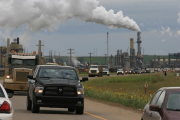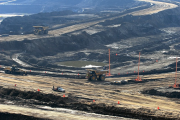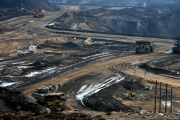When Alberta’s 2021 budget was released late last month, it included the establishment of a $2-million-a-year ESG Secretariat in the premier’s office. This endeavour will collect and promote the province’s gains on environment, social, and governance performance. The point is to boost Alberta’s position as a solid, safe, and consistently high-scoring opportunity for global investment.
Efforts by the province to promote its industry as ethical and environmentally sound aren’t new. But to date, the real work of assessing and improving industry’s performance on ESG metrics has been the domain of the private sector. The entry of the premier’s office onto the field now gives ESG a special resonance at the highest levels of government. It means it is part of a long-term strategy to prove Alberta’s value to investors. But those investors may notice that what’s missing from the strategy so far is a real commitment to climate policy and planning.
Alberta must invest in tangible advancements
ESG benchmarks are increasingly the tools of the investment trade around the world, informing the moves of banks, funds, and pension plans. Alberta’s oil and gas sector has responded to this new scrutiny, but investor pressure is rising every day. No investment in communications will overcome the fact that Alberta must invest in tangible advancements, framed within a consistent, credible climate plan that standardizes monitoring and measurement.
That starts with a commitment to short-term emissions-reduction goals by 2030, leading to net-zero by 2050. This would align the province with Canada’s goals, and with the stated goals of thousands of national and subnational governments and businesses around the world including, now, the United States.
Notwithstanding recent improvements, there’s no escaping that Alberta’s oilsands is still among the most carbon-intensive sources of crude oil in the world. More greenhouse gases are emitted upstream for the average barrel of oilsands oil produced in Canada than an equivalent barrel produced almost anywhere else.
While significant investments have been made — hard work has been done by industry and through initiatives such as the Canadian Oil Sands Industry Association and the Clean Resource Innovation Network — the fact remains that progress has been insufficient. Recent studies show only a 1.9-per-cent to four-per-cent emissions intensity reduction is expected from new technology in the oilsands on a life cycle basis.
Alberta still hasn’t addressed the growing volumes of toxic tailings ponds (volumes have only increased since 2014 and reached 1.3 trillion litres at last update), and we’re still not meaningfully holding industry responsible for cleanup and remediation of thousands of inactive and orphaned wells. Both of these have themselves become a major source of methane pollution, a potent greenhouse gas.
In court, the province is still fighting federal carbon pricing, still opposing the Impact Assessment Act (Bill C-69) and setting itself up to oppose Canada’s clean fuel standard.
A signal that Alberta takes the threat of global warming seriously
A clear and credible climate plan would help address all of these issues. It would send a signal that Alberta takes the threat of global warming seriously and has concrete commitments to change. It would create consistency in policy focused on the common goal of net-zero and create a regulatory environment that would give investors long-term certainty. Oilsands producers in the province are already heading there, but they need policies and programs that help them make the investments necessary.
Recent polling shows that more than two-thirds of Albertans support the goal of net-zero by 2050. A climate plan with short- and long-term targets aligned with North American and global goals would give Albertans something to rally around and convince investors that Alberta has the stable and forward-looking climate policy it needs. We could promote our ESG performance, create investment certainty and jobs, and help the Alberta economy diversify and prosper in a rapidly changing energy system.








